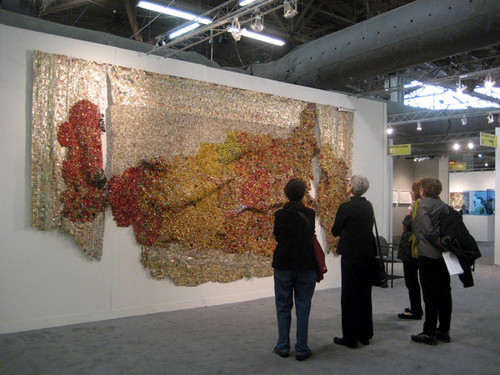El Anatsui -Primeiro tomou Veneza, agora toma Nova Iorque
Publicado22 Fev 2013
O artista ganês El Anatsui vai ter a sua obra exposta no Brooklyn Museum em Nova Iorque. Gravity and grace é o início de uma jornada a caminho de um estado de flutuação.
"Una de las obras más populares en la Bienal de Venecia de hace seis años fue una lámina inmensa de luz ondulante que flotaba, desde el suelo hasta el techo, en la entrada principal. Podía ser un supermosaico en la ciudad de los mosaicos, con incrustaciones de oro y plata. Se veía que aquel objeto brillante estaba compuesto por la unión de una multitud de piezas diminutas: trozos de metal coloreado retorcido formando tiras, cuadrados y círculos, y ensamblados con trocitos de cable de cobre. En algunos de los pedacitos se podían distinguir palabras impresas: Bakassi, Chelsea, Dark Sailor, Ebeano, King Solomon. Algunas parecían extranjeras. Lo mismo ocurría con el nombre del artista: El Anatsui."

